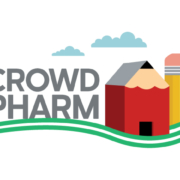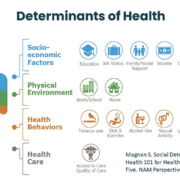Highlights from Digital Pharma East 2023: Harnessing data, omnichannel, and AI for better health care
Highlights from Digital Pharma East 2023: Harnessing data, omnichannel, and AI for better health care
By Sheyda Karvar, Fingerpaint
The pharma industry is at the epicenter of a data revolution. And, there’s no shortage of data available. In a session called “Data, Data, Everywhere,” Harshit Jain, MD, founder and global CEO of Doceree shared that health data accounts for 30% of the world’s data and is on track to become the fastest-growing data source worldwide. The ability to collect a vast amount of behavioral and engagement data has also increased in recent years, as a result of advancements in tagging and measurement technologies.
The prevailing sentiment at Digital Pharma East (DPE) was that while data holds the key to a brighter future in health care, there is still a lot of work to do. The pharma industry struggles with understanding data complexity — and opportunity.
Why the struggle? A combination of regulatory constraints, the fragmentation of data sources, and data isolation all contribute. There is data blindness at all levels, from collection to analysis to activation. The solution starts with a data vision and corresponding data strategy established at the organizational level, that all stakeholders align to. The objective is to break silos and bring disparate data sources — and teams — together.
Greater access to data and advances in marketing technology result in more opportunities to test marketing strategies. But these must be calculated risks in order to avoid waste.
We must understand how the data is sourced and find avenues to standardize and centralize it to one platform. Demystifying the data and making it more accessible will allow marketers to leverage it for real-world use cases. A joint panel featuring PulsePoint and Bayer referenced the industry’s tendency to use “old data,” which one presenter likened to driving while looking in the rearview mirror. When data is current and accessible, marketers can use it to plan, optimize, and measure in-market tests that ultimately improve budget allocations, assign and refine messaging, and identify the best-performing channels and partners—to truly make every dollar work harder.
To harness the full potential of the vast volume of data marketers have at their fingertips — and create a truly omnichannel healthcare experience — it is imperative to adopt a visionary data strategy, break down data silos, and embrace test-and-learn opportunities.
Speaking of omnichannel
Our industry’s widespread enthusiasm and passionate drive for omnichannel progress was apparent throughout DPE, and there is widespread enthusiasm for omnichannel adoption. As with years’ past, there was a lot of discussion around omnichannel but this year, a key theme stood out: the need for omnichannel to bridge communication gaps — between manufacturers and customers, and patients and providers.
Storytelling and marketing technology are the key pieces to bridge these gaps. Relevancy and utility are shown to improve the customer experience and brand perception. Using a thoughtful, purpose-built content strategy where marketers can break through the sea of sameness — a challenge highlighted in a panel called ‘Inspiration from “Outside Pharma” — with personalized, valuable content to begin to build and nurture trust with their customers. Relevancy and utility are shown to improve the customer experience and brand perception. The Sharecare-hosted panel, “The Age of Audience Activation: How Data is Re-Framing Scale,” highlighted the need to show customers what the brand will deliver to them well before asking them to opt-in.
By pinpointing where a user is in the journey with privacy-safe data capture, marketers can identify and activate the communication best suited for the experience. Automation allows us scale with precision and flexibility — pivoting targeting, channels, and messages based on real-time, in-market data to consistently provide relevancy and timeliness. Connecting audiences with what truly matters to them, in the moments that matter, can set brands apart in the competitive landscape and lead to a more connected and compassionate brand experience.
All about AI
Brands, agencies, and publishers are embracing AI for its true utility. One line from the conference that stuck out came from Doximity: “The invention of the calculator did not replace mathematicians.” AI is a tool to free up human potential, rather than replace it.
A similar sentiment was conveyed during “Omnichannel Excellence: From Vision to Execution,” where Paul Hagopian, chief growth officer at Fingerpaint Group, stressed the importance of people when it comes to AI. Hagopian compared the early days of GPS to where AI is now, explaining that while it’s a great tool, you still need people to optimize its potential. AI is only as good as the people using it; adding the expertise and knowledge of the people behind the AI team, and those analyzing what AI creates, is critical to how successful a program using AI is.
So, how is pharma freeing up potential? One promising avenue, highlighted by DeepIntent CEO Chris Paquette, is using AI to solve the issue of data fragmentation across the customer journey. By automating the process of collecting and mining data, we can more seamlessly draw insights — insights that inform content and the user experience, like media channels.
Marketers are as eager as ever to solve our industry’s challenges. And with the right technology and people, they can.
 |
Sheyda Karvar is SVP, media strategy at Fingerpaint. She may be reached at [email protected] |











